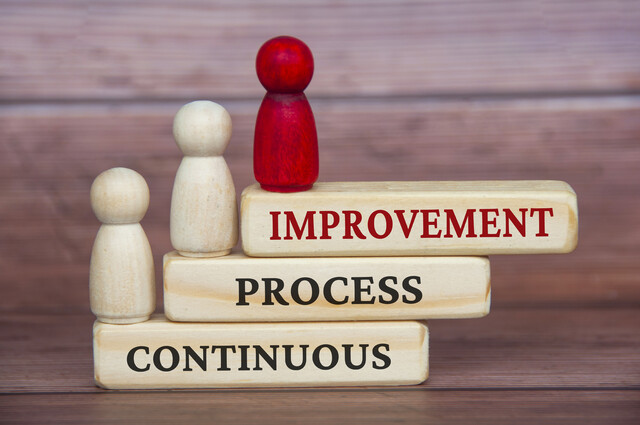(How to write a proposal, rapid results with low labor intensity, and how to disengage)
Every consultant develops their own consulting methodology. Your methodology is developed over time as you develop your processes, methods, and templates for the work you produce doing consulting. Over time, your proposals deliver the best results with low effort, because you have learned from previous experiences -- what works and what doesn't, what clients truly need, what they don't like to see in proposals, and key bits of information you add, which catches the eye of clients.
Let us do an overview of the consulting process first, and then we will explain how your methodology allows you to make the necessary actions to provide your services as a consultant. Your methodology includes templates you have developed for writing your proposals. By refining your templates over time, you are able to get rapid results, with much less intensity of labor. Over time, your methodology becomes more robust, so you are able to disengage from labor-intensive actions and focus more on the quality of the consulting product you deliver.
The Consulting Process
During the consulting process, the consultant and the client engage in activities that are necessary for achieving the desired result or solution. These activities are known as the consulting process. The process begins when you have signed the contract and initiate your work and activities, and the process ends once the client receives your consulting report and a plan for implementation. Your process may vary somewhat, but these are the typical phases of the consulting process. Phase 1 includes the initial contact with the client, preliminary diagnosis of the problem, planning of initial assignments, submitting a proposal to the client, developing the consulting contract, and signing of the consulting contract. Phase 2 includes the diagnosis phase, which includes defining and measuring the problem, researching the problem, performing an analysis of the problem, then seeking client feedback on your proposed actions. Phase 3 includes action planning, which includes developing solutions, developing alternatives, presenting these to the client, and planning for implementation. Phase 4 includes implementation of strategies requiring action, and performing training. Phase 5 includes closure and termination of your consulting project. This consists of submission of the final report, briefing final plans for follow-up, collecting payment, disengaging, and setting the stage for future consulting.
This diagram shows the phases of consulting and the activities that occur in each phase.
This is how the standard template format for a proposal would look:
Proposal Client
You begin with listing the client's name, address, and pertinent information.
Consulting need
You explain the issue or issues at hand, as to why the company needs your services. You explain the insight and methods you will use.
Executive summary
This contains brief information that states the problem the client is trying to resolve. Make this section brief, but with enough information for the client to understand through your proposal you understand the task at hand.
Objectives
This includes information on what type of consulting assistance you intend to provide.
Examples include:
� Increasing operational efficiency within the manufacturing environment
� Bringing new techniques you have acquired through consulting with best-in-class companies
� Reducing cost, and adding value, through improving effectiveness of management
Success measures
This section explains to the client what your consulting services will bring in terms of success, if they hire you.
Examples include:
� Observation of data and time studies
� Prioritization of supervisory priorities
� Explanation of the time you think your recommendations will take to implement -- i.e. time line
� Use of feedback and employee measures to make improvements
Value summary
This shows, in brief, bullet fashion, the overall value the consulting project will bring to the client, including:
� Improve efficiency
� Reduction of cost
� Increase operational capacity
� Avoid productivity loss
� Improve market stature
Time lines
This section tells how long you usually expect to complete your consulting work, and begin implementation of actions.
Methodology options
This section explains how you expect to go about interaction with the client. This may be in an advisory capacity, a consultative capacity, or a collaborative approach.
Joint responsibilities
This is used to convey understanding of activities where delineation of who clearly does what portions -- such as who is responsible for access to employees, scheduling, administrative support, and any confidential documents for nondisclosure agreements.
Terms and conditions
These include fees related to expenses, travel, administrative, logistical, and communication. Typically in this section, consultants list their fees and service options. For example, option one, option two, or option three. This provides clients with the choice of consulting offers.
Acceptance
This section has an area for signatures and calendar dates for the consultant and the client.
Business environment and competition should be included if the aspects of what you are consulting on include business competition or competitive market.
Scope of your consulting includes what you are proposing to do, and what you are not proposing to do.
Key terms section is used to describe any unusual terms used in your proposal.
Know the difference between consulting proposals and consulting reports. For clarity, the consulting proposal is the initial document you submit to a client in anticipation of future business. The consulting report is the final report of your analysis and actions of your consulting activity, which are developed using your consulting methodology.
Developing your draft
Remember, the client is hiring a consultant based on specific needs. Your job as a consultant is to craft a short, yet concise, proposal that most closely fits their needs by describing the procedures you will take, and outcomes you expect as a consultant. Envision yourself as the individual or team reviewing proposals and what your expectation would be in the document. The client has to feel that you understand their economic, technological, political, and social climate, and are the sole individual who can take the current situation and produce the best outcome. This is the individual who can best show:
-
They understand the client.
-
They recognize their need.
-
They best summarize the client's needs.
-
They offer the best opportunity for success, based on the strategy they propose.
Key areas that will help differentiate your proposal from others is the manner in which you describe the methods of intervention you will use, how you will isolate problems, your preliminary understanding of the scope of problems in your understanding of the company's readiness for change. As clients review your proposals, they are primarily looking for the person who best understands the forces that act on their company within the marketplace, which include environmental, political, economic, legal, technological, and social aspects. As they see you have an understanding of their environment, they will compare your proposal to others in terms of your consulting competence, specialized technical knowledge and skills, managerial skills, and interpersonal skills.
Proposal tips
Many consultants joke that, "The best proposal is a proposal you don't have to write." Often, if you are working with clients who have a familiarity with you, it may not be required to develop a full formal consulting proposal. In this case, you may only have to sign a confirmation letter. Quite often this is not the case; then you must develop a proposal for your possible client. When you do have to develop a proposal, use your proposal outline, and over time the proposal methodology you develop. Here are some general tips that will help out in writing the perfect proposal:
-
Create a powerful executive summary. Develop this document by being succinct and creative. Remember, this is your opportunity to win business, so write big.
-
Be brief, use brevity. Be brief, yet provide a high-quality document
-
Quantify the expected results. Clients want to know more about what you're going to provide, instead of how you going to get there.
-
Share ideas. Don't be afraid to share with your client some of your ideas for improvement. This will give them an idea of what you are thinking, and how you can be successful on their project.
-
Client focused. Avoid discussion about the consulting firm and its history in your proposal, and focus on how you will address their issues.
-
Avoid business clich� overuse -- such as "best practice," "win-win," "agent of change," "gone viral," etc.
-
Accuracy should go without saying. Prior to submitting your proposal to a potential client, double check all of your facts and information. Make sure to spell check, and print your proposal on high-quality material. If possible, use someone else to make a review of your proposal. Use care when you proofread, as spell check does not pick up "from" and "form," but your readers will, and it reflects on your overall credibility.
-
Ability is a characteristic you want to portray to potential clients. Be sure to showcase your abilities and capabilities as a consultant.
As you frame your proposal, keep in mind the key ideas that clients have, and develop your proposal accordingly. Clients have a difficult time determining whether they are getting the right value for their money. Clients find it difficult to differentiate between consultants, based on the wide range of services they offer, and the terminology they use. Clients typically find it difficult to make comparisons.
Proposal presentation
Once you have the perfect proposal developed, it is important to present it with a quality look and feel. Use high-quality paper, presentation binders, and folders for your proposal. If you provide a copy in digital format, ensure the quality label is affixed with your consulting company name, contact information, and the title of the proposal. Typically, reports are covered with a card stock, which is used to protect the document. The cover of your report should include the same information, including consulting company name, contact information, and the title of the proposal. Online and local office companies can help develop your corporate identity design
Following is a brief proposal checklist
-
Cover letter
-
Objectives
-
Measures
-
Value
-
Situational awareness
-
Timing
-
Methodology
-
Joint accountability
-
Terms and conditions
-
Acceptance document
-
Differentiation aspects - What makes your proposal different from the 10 others on leadership's desk? Is your analysis better? Is your proposal crafted in a manner where the verbiage stands out and more succinctly defines the actions you will take? Is your pricing reasonable and fair, based on the work you will do? Is the visual appeal of your proposal the best in terms of quality and format?
In addition to your written proposal, you may need a formal presentation, such as PowerPoint or Prezi to get your point across to clients. There are numerous attractive, elegant professional templates for building your business case. Remember, presentation is very important as you submit your consulting reports. There are numerous templates available for purchase and for free, if you are beginning a startup.
As a consultant, you must display the ability to write the most appropriate proposal, with the best writing techniques. Ensure that you have relevant data, easily displayed, and can convey to the client, in a brief and concise fashion, the activities you will perform and the results they will accomplish. Following are some examples of consultant analysis charts. They convey both the present state and future state of the organization, so the client can see very easily the improvements they need to make, and the time lines in which they will occur. It is important that they catch the client's eye.
Once you have passed the hurdle of the written proposal you more than likely will be required to provide an oral presentation. Remember to adapt your style to the respective audience.
How to disengage
Disengagement is the act of ensuring the client can continue without you as a consultant. To properly disengage, you want to leave the client with a plan of action that includes specific tasks and activities with associated time lines. As a consultant, you will monitor the actions to refine your own return on investment, but also to convey to the client how you were able to resolve their issues. It is key that you ensure client satisfaction through verbal means, but also through a customer satisfaction survey. This will provide you with information that can help you on your methodologies, and also gives you the opportunity as a consultant to potentially sell additional services.
At this point, you will use project management techniques to close the project. A significant part of this engagement is the documentation of closure, where you relate the actions you have taken back to the clients' expectations and evaluate the overall consulting experience.
Summary Reminders and Takeaways
This article covered your consulting methodology, which includes how you write your proposals with low labor intensity, and how you disengage with clients after you have performed your consulting.
How you structure your proposals and convey the content is critically important to whether you win the consulting contract. You learned that methodologies are a frame, structure, or set of tasks, completed in a logical order, to produce a result. During the consulting process, the consultant and the client engage in activities that are necessary for achieving the desired result or solution. These activities are known as the consulting process. There are five phases you must understand, because they affect how you do your consulting and also go into the framework of your proposals. Initiation phase includes your initial contact with the client, and a preliminary diagnosis of the problem, which is submitted in your proposal to the client. The diagnosis phase includes defining and measuring the problem and performing research. In the action planning phase, the consultant develops solutions, develops alternatives, makes a plan for implementation, and presents these to the client. The implementation phase includes implementing your strategy for action and performing training for employees. A closure and termination phase includes briefing management on your plans for final follow-up, submitting your consulting report, collecting your payment, disengaging, and setting the stage for future consulting opportunities.
Proposals have the following sections: the name of the client, the consulting need, executive summary, the objectives, success measures, the value summary, time lines, methodology options, joint responsibilities, terms and conditions, acceptance, business environment, scope, and keys terms. As you develop your proposal, you want to be brief, create a powerful executive summary, share your ideas, be client focused, ensure your accuracy for data, and convey your ability to do the consulting work.
Disengaging with clients means that you have aligned them with all the necessary activities to achieve the desired result. In this phase, you follow up with the clients periodically, but are not expected to manage the day to day work to improve the results. During the disengagement, you want to ensure that the client was satisfied and their expectations were met. Use project management techniques to close the project, including documentation of the activities you underwent during the consulting, and any follow-up activities that are still required.





























